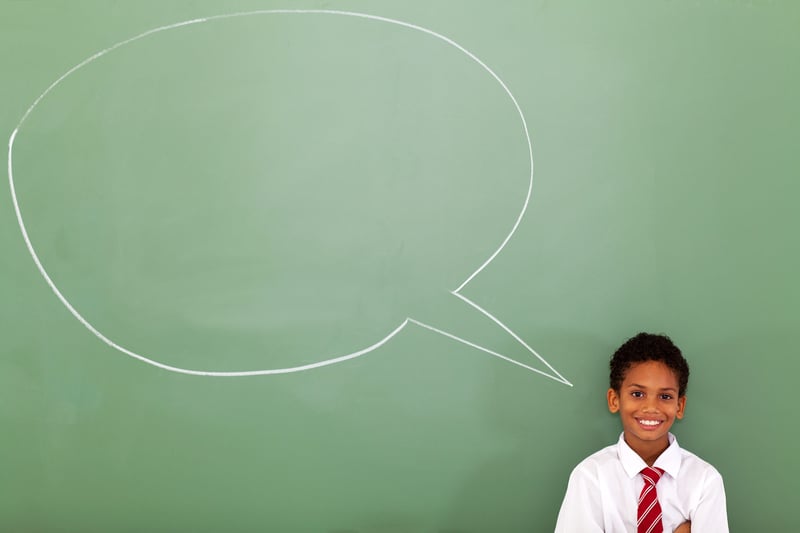
My daughter has to present a speech at school today. As I waved her off, with a few encouraging words, I took a little time to reflect on how happy and confident she appeared. I too was happy and confident – happy she had worked hard on preparing her speech and confident she was going to do very well in her presentation.
For many people, speaking in front of others would probably rate very highly on the list of things they would rather not have to do. Whilst we may be able to avoid that in adult life, school is filled with times when students need to give speeches and presentations of all kinds.
It begins in the very earliest years of school, with show and tell sessions and ‘news’ time, where children talk about things of interest and importance to themselves. As children move through the years, the topics become more related to what is being studied in class and criteria are set against which students are assessed. Before long, your child is giving multi-modal presentations using palm cards and other props!
Given that speeches and presentations will feature so highly in your child’s school life, what can you do to help them have success in this area?
Know the topic
If possible, choose a topic which your child is familiar with. If that is not possible, research, read and then research some more until your child is familiar with the topic. Ask family and friends if they have any first-hand knowledge of the topic. The more familiar your child is with the topic, the more likely it will be that they will present their information with confidence.
Know the purpose
Most school presentations will have a clearly defined topic and purpose. Be sure to always keep the purpose in mind when preparing and understand the structure of particular styles of writing and speech. If you are unsure of the purpose or style of speech that is required, ask your child’s teacher to clarify.
Practice, practice, practice
Once the speech is written the next most important part begins – practicing the speech. Practicing at least daily will help your child enormously. Begin by getting your child to read the speech to themselves, first silently, then aloud. Be listening for correct pronunciation and smooth sentence flow. Work on these areas if needed.
Listen
This is another crucial element. Your child is ultimately going to present to an audience, so having time to practice on you is important. Try to set aside time when you can give your full attention so that your child can practice maintaining eye contact whilst speaking. This may become a little monotonous after the twentieth time, but it is worth it!
A good idea is to get your child to record themselves on a phone or dictaphone and let them listen back to it. This will help them to identify for themselves where their talk is working or falling over.
Gently guide and set goals
As you listen, look for areas where your child is doing well and praise their effort. Look too, for ways to improve and gently suggest how your child can incorporate these into their presentation. Pace, volume, clarity of speech, and eye contact are all good things to consider. Focus on just one at a time and praise any effort or success.
I really loved how this way done in my daughter’s class last year, where her teacher and peers took on this role. I saw great improvement in my daughter’s confidence and success and a result of this review and goal setting approach.
Act confidently
Let your child know that even if they don’t feel confident, they can look confident. Standing up tall, keeping hands still by holding palm cards and speaking in a slower voice all make a person appear confident. Share these little tips with your child and see the impact they have on the success of their presentation.
One trick that professional presenters do is to film their presentation and then watch in back in fast motion. Any nervous ticks, twitching or repetitive physical habits - such as hair twiddling, hand gesturing or face-touching - will be instantly obvious.
Don’t worry about mistakes
Even after all the preparation and practice, there may still be some mistakes in the presentation. Let you child know that this is likely to happen and equally let them know that the audience will most likely not notice. Substituting a word that sounds correct, or forgetting a sentence may make little difference to the overall message being given. When mistakes pop up, encourage them to keep going and chances are no one will know.
Encourage them
Speak positively about your child’s ability to successfully deliver their speech. Remind them of their preparation and practice, let them know how well you think they are doing and how confident they look when presenting. Those last few words of encouragement as you say goodbye can have a big impact as your child will carry that positive message with them up to the time of their presentation.
With good preparation, lots of practice, a few little tricks and oodles of encouragement your child is sure to do well in their next presentation. Why not put some of these ideas to the test and let us know how they work for your child.










